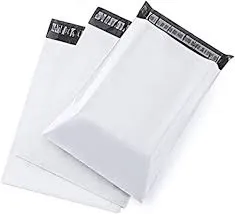Choosing the Best Disposable Gloves for Kitchen Safety and Hygiene
The Importance of Disposable Gloves for Kitchen Use
In today’s fast-paced world, maintaining hygiene in the kitchen has become more crucial than ever. With increased awareness about foodborne illnesses and the importance of food safety, disposable gloves have emerged as a vital tool for both professional kitchens and home cooks. This article explores the importance of disposable gloves in kitchen use, their benefits, and some best practices for usage.
Understanding Disposable Gloves
Disposable gloves are typically made from materials like latex, nitrile, or vinyl and are designed to be worn once and then discarded. They provide a barrier between hands and food, minimizing the risk of contamination. In a kitchen setting, these gloves serve multiple purposes they protect food from bacteria present on our hands, reduce the likelihood of cross-contamination between raw and cooked foods, and help maintain the integrity of the cooking and preparation process.
Benefits of Using Disposable Gloves
1. Hygiene and Safety The most obvious benefit of using disposable gloves is enhanced hygiene. When handling food, particularly raw meats, poultry, and seafood, the risk of transferring harmful bacteria is high. Disposable gloves act as a protective barrier, significantly reducing this risk.
2. Cross-Contamination Prevention Cross-contamination is a common cause of foodborne illnesses. By using gloves, cooks can avoid spreading contaminants from one type of food to another. For instance, if you handle raw chicken and then touch vegetables without changing your gloves, you risk contaminating the vegetables with harmful bacteria. Gloves help to break this cycle of contamination.
3. Convenience and Time-Saving Disposable gloves offer convenience, particularly in busy kitchens. They can be easily put on and taken off, allowing cooks to switch between tasks quickly. For example, after preparing raw ingredients, one can simply discard the used gloves and put on a new pair for handling ready-to-eat foods, thus streamlining the cooking process.
4. Professional Appearance In a commercial kitchen, the use of disposable gloves can elevate the professional appearance of staff. It signals to customers that the establishment takes food safety seriously. This can enhance customer trust and satisfaction, making gloves an important aspect of customer service in the food industry.
5. Protecting the Skin Certain food items, such as acidic ingredients, can irritate the skin. Wearing disposable gloves not only keeps hands clean but also protects them from potential irritants, ensuring a more pleasant cooking experience.
disposable gloves for kitchen use

Best Practices for Using Disposable Gloves
While disposable gloves offer numerous advantages, it’s essential to use them correctly to maximize their benefits
1. Choose the Right Material Depending on your needs, choose gloves made from latex, nitrile, or vinyl. Nitrile gloves are often preferred due to their durability and resistance to punctures, making them suitable for handling various foods.
2. Wash Hands Before Wearing Even when using gloves, hand hygiene cannot be overlooked. Always wash your hands thoroughly before putting on gloves to ensure they are free from contaminants.
3. Change Gloves Regularly Dispose of gloves after each task, particularly after handling raw meat or poultry. If you switch from one type of food to another, changing gloves is essential to prevent cross-contamination.
4. Proper Disposal Always dispose of used gloves properly. Do not reuse disposable gloves, as this defeats their purpose and can lead to contamination.
5. Store Gloves Correctly Keep your supply of disposable gloves in a clean, dry place away from direct sunlight and chemicals. This ensures they remain safe to use and do not degrade over time.
Conclusion
In summary, disposable gloves are an essential component of kitchen hygiene and food safety. Their ability to prevent cross-contamination, maintain a hygienic environment, and protect both food and the cook's hands makes them invaluable in any food preparation setting. By understanding their importance and following best practices, both professional chefs and home cooks can significantly contribute to safer eating experiences. So next time you enter the kitchen, don’t forget to reach for those disposable gloves—they might just be the most crucial tool in your cooking arsenal!
-
Unlock Freshness with Premium Food Wrap RollNewsJun.04,2025
-
Smart Shipping Starts with the Right Mailing BagNewsJun.04,2025
-
Shine and Protect with OPP Bag PackageNewsJun.04,2025
-
Revolutionize Retail Packaging with T Shirt BagsNewsJun.04,2025
-
Elevate Waste Management with the Right Trash BagNewsJun.04,2025
-
Deliver Smarter with High-Quality Bubble MailerNewsJun.04,2025
-
Have the freedom of customizing your custom mailers any way you want! Our dedicated packaging support will help deliver you the mailing experience you need to elevate your shipping experience to the next level! Start making a strong impression on your customers and stand out from your competitors! -
LIYA uses high quality raw materials which directly purchased from large enterprises domestic and overseas such as PetroChina, Sinopec, Sabic, Equate, ExxonMobil, Dow Chemical, Total, and Borouge, ensuring the price advantage and quality of the raw materials. -
LIYA uses high quality raw materials which directly purchased from large enterprises domestic and overseas such as PetroChina, Sinopec, Sabic, Equate, ExxonMobil, Dow Chemical, Total, and Borouge, ensuring the price advantage and quality of the raw materials.





